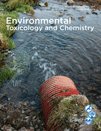
ENVIRONMENTAL TOXICOLOGY AND CHEMISTRY
Scope & Guideline
Championing rigorous research in environmental chemistry.
Introduction
Aims and Scopes
- Ecotoxicology of Emerging Contaminants:
The journal emphasizes research on emerging contaminants such as per- and polyfluoroalkyl substances (PFAS), pharmaceuticals, and microplastics, exploring their ecological impacts and mechanisms of toxicity across diverse species. - Chemical Risk Assessment:
A significant focus is placed on developing methodologies for assessing the risks posed by toxicants to aquatic and terrestrial organisms, including the use of modeling approaches to predict exposure and effects. - Biodiversity and Ecosystem Health:
Research articles often address the relationship between chemical exposure and biodiversity, examining how contaminants affect population dynamics, community structure, and ecosystem services. - Biomarkers and Mechanistic Studies:
The journal publishes studies that utilize biomarkers and mechanistic insights to elucidate the effects of pollutants at molecular, cellular, and organismal levels, contributing to a better understanding of toxicity pathways. - Transdisciplinary Approaches:
Research often integrates various scientific disciplines, including toxicology, ecology, and environmental chemistry, to address complex environmental issues and promote sustainable practices.
Trending and Emerging
- Microplastic Pollution:
There is a growing volume of research dedicated to understanding the sources, fate, and ecological impacts of microplastics in various environments, highlighting their pervasive nature as an environmental contaminant. - Pharmaceutical Contaminants:
The investigation into the occurrence and effects of pharmaceuticals in aquatic systems is gaining traction, particularly concerning their ecological impacts and potential risks to wildlife and human health. - Omics and Systems Biology Approaches:
Emerging studies increasingly employ omics technologies (e.g., transcriptomics, metabolomics) to assess the biological effects of contaminants, providing deeper insights into the mechanisms of toxicity and organism responses. - Climate Change Interactions:
Research examining the interactions between chemical stressors and climate change is becoming more prevalent, addressing how changing environmental conditions may alter the toxicity of pollutants. - Cross-Species Extrapolation:
There is an increasing emphasis on methodologies for cross-species extrapolation to improve risk assessment frameworks, ensuring that findings from model organisms can be reliably applied to other species.
Declining or Waning
- Traditional Toxicology Methods:
There is a noticeable decline in studies solely relying on traditional toxicity testing methods without integrating modern approaches such as omics technologies or modeling frameworks. This reflects a broader trend towards more holistic and interdisciplinary research. - Focus on Single Contaminants:
While previous years saw substantial attention on the toxicity of individual contaminants, recent publications show a growing preference for studying complex mixtures and their cumulative effects, leading to less emphasis on single-contaminant studies. - Historical Contaminant Studies:
Research examining the historical impacts of legacy contaminants, such as DDT or PCBs, is becoming less frequent, as contemporary concerns regarding emerging contaminants take precedence in research agendas. - Agricultural Contaminants:
The focus on traditional agricultural pollutants, such as specific pesticides and fertilizers, appears to be waning, possibly due to the increasing emphasis on integrated pest management and sustainable agricultural practices.
Similar Journals
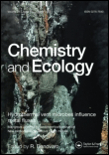
CHEMISTRY AND ECOLOGY
Illuminating the Chemistry Behind Ecological SystemsCHEMISTRY AND ECOLOGY is a prestigious academic journal published by TAYLOR & FRANCIS LTD, dedicated to advancing the interdisciplinary understanding of chemical processes in ecological systems. With an ISSN of 0275-7540 and an E-ISSN of 1029-0370, this journal has been a significant contributor to the fields of Earth and Planetary Sciences, Ecology, and Environmental Science since its inception in 1982. The journal is proudly ranked in the second quartile (Q2) in multiple categories, including Earth and Planetary Sciences and Ecology, reflecting its high impact within these disciplines. Despite not being an open-access publication, it provides valuable insights through rigorous peer-reviewed articles that explore the intricate relationships between chemical phenomena and ecological dynamics. Researchers, professionals, and students can rely on CHEMISTRY AND ECOLOGY for the latest findings and methodologies that drive innovation and understanding in environmental chemistry and ecology, enhancing their work and education in this critical area of study.
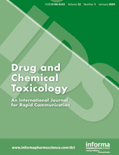
DRUG AND CHEMICAL TOXICOLOGY
Unraveling the complexities of chemical exposure.Drug and Chemical Toxicology is a well-respected journal in the fields of toxicology, pharmacology, and public health, published by Taylor & Francis Ltd. Since its inception in 1978, this journal has diligently explored the effects and mechanisms of chemical exposures on health and the environment, fulfilling a crucial role in advancing scientific understanding and safeguarding public health. The journal is indexed across prestigious databases and features an impressive array of articles categorized within the Q2 and Q3 quartiles across various categories in 2023, reflecting its significance in Chemical Health and Safety as well as Environmental and Occupational Health disciplines. With an extensive reach and a focus on interdisciplinary research, Drug and Chemical Toxicology offers a rich repository of original research, reviews, and methodological advancements, catering to a diverse audience of researchers, professionals, and students dedicated to the betterment of safety and health standards. Although not an open-access publication, its articles are widely accessible to the academic community, ensuring that critical innovations and insights are shared for the greater good.
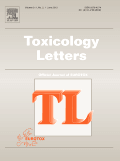
TOXICOLOGY LETTERS
Exploring the intricate dance between chemicals and biology.TOXICOLOGY LETTERS is a prominent journal dedicated to advancing the field of toxicology, providing a platform for high-quality research and reviews that explore the effects of chemical substances on biological systems. Published by Elsevier Ireland Ltd, this peer-reviewed journal has established itself as a vital resource in toxicological research since its inception in 1977, with a convergence of studies extending to 2024. With an impressive Scopus ranking, positioned at #28 out of 133 in the Toxicology category, TOXICOLOGY LETTERS garners a respectable percentile of 79, highlighting its significance in the academic community. Although it is not an open-access journal, its research is accessible through institutional subscriptions, ensuring that critical insights into human health and environmental safety are disseminated effectively. Being categorized in the Q2 quartile in both Medicine (miscellaneous) and Toxicology for 2023 further emphasizes its relevance and impact in these fields. This journal aims to foster collaboration between researchers and professionals, encouraging the exploration of innovative solutions to chemical hazards and the promotion of safer practices in pharmacology and toxicology.
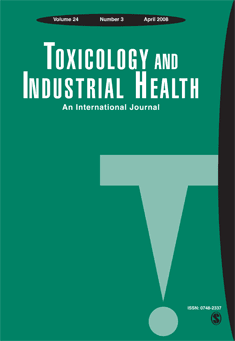
TOXICOLOGY AND INDUSTRIAL HEALTH
Bridging research and application to enhance environmental safety.TOXICOLOGY AND INDUSTRIAL HEALTH, published by SAGE PUBLICATIONS INC, is a premier journal in the field of toxicology, public health, and environmental health, with a significant history dating back to 1985. With its ISSN 0748-2337 and E-ISSN 1477-0393, the journal provides a platform for disseminating groundbreaking research and comprehensive reviews that address the complexities of toxic substances in industrial and occupational settings. Despite its Q3 ranking among peers in health, toxicology, and public health, this journal is becoming increasingly influential, reflected in its growing citation metrics. Researchers and professionals benefit from its commitment to fostering knowledge in both theoretical and practical contexts, making it an essential resource for those dedicated to advancing understanding in this vital field. The journal's main objectives include promoting research addressing the implications of toxicology on health and safety standards across industries, ensuring accessibility to current studies for a global audience. Overall, TOXICOLOGY AND INDUSTRIAL HEALTH plays a critical role in bridging the gap between research and real-world applications, proving invaluable to students, professionals, and researchers alike in their pursuit of enhancing public health and environmental safety.
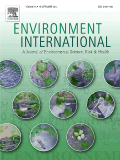
ENVIRONMENT INTERNATIONAL
Championing Excellence in Environmental ScholarshipENVIRONMENT INTERNATIONAL is a premier journal dedicated to advancing the field of environmental science. Published by PERGAMON-ELSEVIER SCIENCE LTD, it boasts an impressive impact factor and holds a prestigious Q1 classification in the Environmental Science category, reflecting its influence and reputation within academia. Since transitioning to Open Access in 2019, the journal has increased its accessibility, allowing a wider audience—from researchers to industry professionals—to engage with cutting-edge studies that address crucial environmental challenges. With a Scopus rank of #3 out of 233 in General Environmental Science and a commendable 98th percentile, ENVIRONMENT INTERNATIONAL is committed to publishing high-quality research that informs policy and practice. Covering a broad spectrum of topics from pollution and climate change to sustainable development, this journal serves as a vital resource for those dedicated to making a positive impact on our planet. For submissions, inquiries, or to explore its extensive archives dating from 1976 to 2024, please visit their site at the Kidlington, Oxford headquarters.
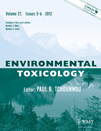
ENVIRONMENTAL TOXICOLOGY
Understanding Toxins: Protecting People and PlanetENVIRONMENTAL TOXICOLOGY, published by Wiley, is a premier academic journal dedicated to the multifaceted study of toxic substances in the environment and their effects on human health and ecosystems. With the ISSN 1520-4081 and E-ISSN 1522-7278, this journal holds a prestigious position in the field, being ranked in the Q1 category across various relevant disciplines, including Health, Toxicology and Mutagenesis, and Management, Monitoring, Policy and Law. The journal regularly publishes high-quality research articles, reviews, and policy discussions aimed at understanding the implications of environmental toxins from 1980 to the present, contributing to the body of knowledge critical for the safety and sustainability of our environment. Researchers and professionals will find a treasure trove of information that not only highlights current trends and methodologies but also sets the stage for future advancements in toxicology. As a key resource, it provides valuable insights necessary for policy-making, environmental management, and public health, reinforcing its significance in the ever-evolving fields of toxicology and environmental science.
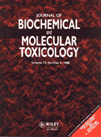
JOURNAL OF BIOCHEMICAL AND MOLECULAR TOXICOLOGY
Unraveling the Complexities of Molecular ToxicologyJournal of Biochemical and Molecular Toxicology, published by Wiley, plays a pivotal role in the advancement of knowledge within the fields of biochemistry, toxicology, and molecular biology. Established in 1998, this esteemed journal has garnered a significant reputation, evidenced by its current placement in the Q2 quartile across several categories, including Biochemistry, Health, Toxicology and Mutagenesis, and Medicine. With an ISSN of 1095-6670 and an E-ISSN of 1099-0461, it serves an international audience, offering critical insights and innovative research that shape our understanding of biochemical interactions and toxicological assessments. While it does not operate on an open-access model, the journal ensures rigorous peer review and high-quality publication standards, making it a valuable resource for researchers, professionals, and students dedicated to the exploration of molecular toxicology. The journal's recognized impact within the scientific community is reflected in its competitive rankings among specialized journals, fostering significant contributions to both academic and applied contexts.
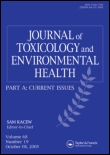
JOURNAL OF TOXICOLOGY AND ENVIRONMENTAL HEALTH-PART A-CURRENT ISSUES
Navigating Current Issues in Toxicology and HealthJOURNAL OF TOXICOLOGY AND ENVIRONMENTAL HEALTH-PART A-CURRENT ISSUES, published by Taylor & Francis Inc, stands as a key resource in the interdisciplinary field of toxicology and environmental health. Operating under the ISSN 1528-7394 and E-ISSN 1087-2620, this journal maintains a strong presence with a Q2 category ranking in Health, Toxicology and Mutagenesis and a Q3 ranking in Toxicology as of 2023. It aims to disseminate critical findings that address contemporary issues in toxicology and environmental health, emphasizing the implications of environmental agents on human health. The journal offers both subscription and open access options, making cutting-edge research accessible to a diverse readership. With coverage of key topics from 1998 to 2024, it is an essential platform for academics, professionals, and students seeking to stay at the forefront of environmental health sciences.

Toxics is a leading international journal published by MDPI that has been dedicated to advancing the knowledge in the fields of toxicology, environmental health, and chemical safety since its inception in 2013. With an impressive Open Access model, it ensures that all research findings are readily available to a global audience, fostering collaboration and innovation across academia and industry. The journal is esteemed for its rigorous peer-review process and holds notable rankings, including Q1 status in Chemical Health and Safety and Q2 in both Health, Toxicology and Mutagenesis and Toxicology, reflecting its impact on critical research areas. Based in Basel, Switzerland, Toxics provides a platform for researchers, professionals, and students to disseminate significant findings on the implications of toxic substances in health and the environment, aiming to improve public health outcomes and inform regulatory decisions. With its ongoing commitment to high-quality research and relevant access options, Toxics continues to be an essential resource in the domain of toxicology and environmental sciences.
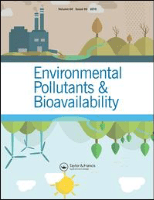
Environmental Pollutants and Bioavailability
Exploring the Nexus of Contaminants and HealthEnvironmental Pollutants and Bioavailability, published by Taylor & Francis Ltd, serves as a critical platform for disseminating high-quality research focused on the interactions between environmental contaminants and biological systems. Since its inception as an Open Access journal in 2019, it has rapidly gained recognition within the scientific community, achieving a commendable Q2 ranking in multiple categories including Chemical Health and Safety, Health, Toxicology and Mutagenesis, and Toxicology for the year 2023. The journal aims to bridge the gap between environmental science and public health by exploring innovative methodologies, risk assessments, and bioavailability studies related to pollutants. Located in the United Kingdom, Environmental Pollutants and Bioavailability is positioned to impact ongoing discourse and research practices in the fields of toxicology and environmental safety, making it an invaluable resource for researchers, professionals, and students dedicated to advancing knowledge in these critical areas.